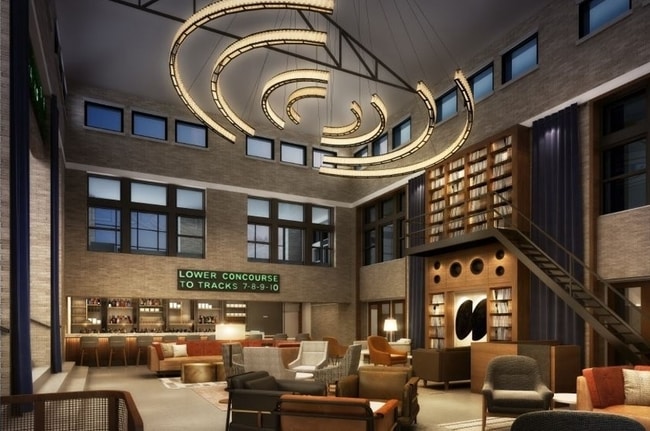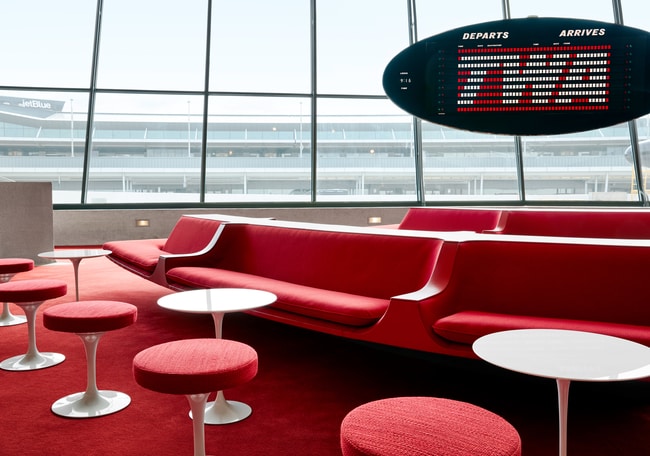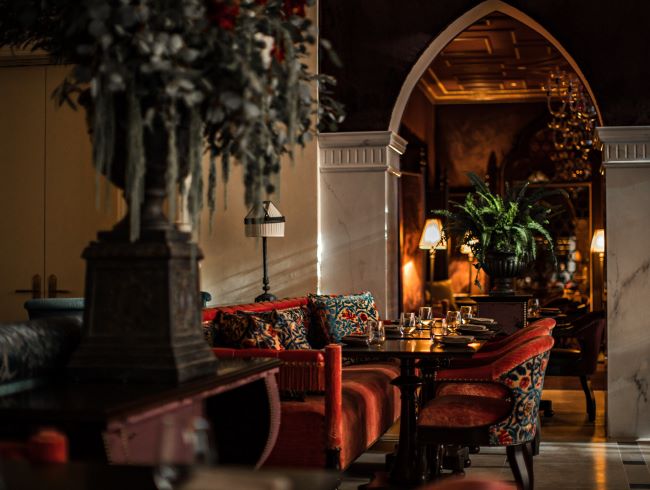Is old the “new” new? Hotels across the U.S. are opening in restored and renovated historic buildings that give new properties a tie to the past.
“An existing building, especially one that has historical relevance and importance, has a history of memory and, therefore, emotion,” said McLean T. Wilson, principal, Kemmons Wilson Company and owner of The Central Station in Memphis, Tennessee, which opened in October in the city’s 105-year-old transportation hub. “Adapting an old building for a new use enables us to tap into those memories and that emotion for our new use.”
Here are four hotels that opened this past year in buildings that have a new lease on life. Groups meeting onsite can gain a glimpse into the destinations’ pasts while enjoying all the modern conveniences.
Shinola Hotel, Detroit
Shinola Hotel opened in early 2019 in two restored buildings in Detroit’s historic Woodward Avenue shopping district. The project married two of the city’s restored buildings, the one-time T.B. Rayl & Co. department store and a former Singer sewing machine store.
“Nods to the original buildings can be found throughout the property with wall and floor coverings that were all designed and inspired by the look and feel of the buildings’ original architecture,” said Daniel Caudill, creative director for the hotel. “Marbleized wallpaper mimics the marble found buried in the Rayl’s building, and the signature Shinola blue was developed by the hotel's design firm Gachot from a lone paint chip unearthed in the Singer building, which inspired the hue accented around the property.
The bath amenities in the hotel’s 129 guest rooms are another nod to the property’s past. They were made specifically for Shinola Hotel and inspired by and branded as Rayl’s.
“There’s something comforting and nostalgic about being in an old structure that has been given a new purpose without losing some sense of its history,” Caudill said. “Shinola itself was built by the city and its people, so we felt it necessary to keep some of the historic elements of the building in the hotel’s design.”
Turning the two historic buildings—as well as the three new additions that complete the property—into one cohesive hotel took extra care and design.
“We wanted to make sure the design and flow of the hotel felt seamless, and not disjointed, as guests make their way around the property,” Caudill said.
[Related: 3 Historic Buildings Repurposed as Hotels in St. Louis]
Groups can utilize one of the several rooms that blend the old with modern elements and technology. The Foundry Room can accommodate 20 for small meetings and functions while Bixby Hall, which features a tile ceiling, chandeliers and a marble fireplace as well as French doors that open to outdoor space, can host events of up to 180 guests.
The hotel’s four onsite restaurants and bars can also accommodate groups for private dining and events.
The Central Station Hotel, Curio Collection by Hilton, Memphis
Set in Memphis’ South Main District, The Central Station Hotel, Curio Collection by Hilton transformed the city’s 105-year-old transportation hub into a 123-room hotel that opened at the end of October.
Because the hotel development was an adaptive reuse, the history of the building influenced everything,” Wilson said. “The building has a past and we are here in the present, preparing for the story of the future. It was important to pay homage to the past and not try to cover up or forget that which was before us.”
An example of that is that instead of covering up historic doors, acoustic glass was added in front of them to ensure their preservation of the historical elements and details of the building.
Wilson explained that although the history of the property is as a train station, the transportation hub is still in use today, so they didn’t feel that we needed to play up the “train theme”.

Photo: The Central Station Hotel Lobby Bar. Photo courtesy of The Central Station Hotel.
However, industrial inspiration was used throughout the design, which focused on three main elements: Memphis, South Main Arts District and the Central Station Building.
“With respect to Memphis, we curated our bar, 8 & Sand, to represent Memphis music,” Wilson said. “We have curated over 40,000 songs and 10,000 vinyl records (in our album wall in the bar), that all are tied and connected to Memphis. We fashioned an old organ into a DJ booth and we play/spin records of Memphis music.”
As an homage to its South Main Arts District location, all of the artworks in the building are original pieces. A local photo artist took the train line up to Chicago and down to New Orleans taking photos along the way, which now hang in the guest rooms.
Completing a project of this scale while maintaining much of its history did not come without challenges.
“There are always multiple challenges with adaptive reuse,” Wilson said. “ We have to play within the confines of both the exterior walls but also, because we were utilizing Historic Tax Credits, we had to play within the confines of the direction from the National Park Service, which oversees Historic Buildings, to ensure we keep the historic relevancy present.”
Wilson also noted that rewiring a building for today’s technology was challenging but essential, so groups using the hotel’s 8,000 square feet of event and meeting space, including a 6,500-square-foot Grand Hall ballroom that occupies the transportation hub’s former waiting room space, will be well connected to do business.
TWA Hotel, Jamaica, New York
This year, the iconic Trans World Airlines (TWA) terminal at John F. Kennedy International Airport was brought to life once again.
Upon completion of the restoration of Eero Saarinen’s landmark 1962 terminal, the TWA Hotel opened in mid-2019.
The TWA Hotel's 512 midcentury modern-inspired guest rooms are housed in brand new buildings behind the 1962 Eero Saarinen-designed landmark that will be the heart of the hotel.
“Eero Saarinen’s cathedral to aviation has always looked toward the future,” said Tyler Morse, CEO and Managing Partner of MCR and MORSE Development at the hotel’s grand opening event in May.

Photo: TWA Hotel. Credit: TWA Hotel and David Mitchell
“We restored and reimagined his landmark with the same care that he devoted to his design," he added. "No detail went overlooked—from the millwork by Amish artisans to the custom font inspired by Saarinen’s own sketches to the one-of-a-kind manhole covers.”
Especially unique to the hotel is the onsite museum that honors the TWA history, the Jet Age and the Mid-Century Modern design movement. Vintage furniture from the TWA headquarters and in-flight amenities from the past are among the items showcased.
The exhibits are located in various areas throughout the former TWA terminal as well as in its event center. The hotel offers 50,000 square feet of function space across 45 event rooms—and in the areas that connect the hotel to the airport’s Terminal 5.
NoMad Los Angeles, Los Angeles
In Downtown, NoMad Los Angeles opened in 2018 in Giannini Place. A historic landmark formerly known as the original Bank of Italy, the hotel’s design elements are a nod to the building’s history.
Much of the building’s Neoclassical style, such as its Doric columns, ornate ceiling and marble floors, have been preserved and incorporated into the new design. The original vault that once housed 12,000 safety deposit boxes and a 50-ton door have been kept intact alongside the square pilaster columns topped with Corinthian capitals located in the lobby and restaurant areas.

Photo: NoMad LA Lobby. Credit: Benoit Linero
The hotel was designed by French architect and designer Jacques Garcia and the 241 guest rooms feature Italian-inspired features. The guest rooms’ color palette is drawn from the property’s fully restored gold and blue Italianate ceiling located in the lobby.
The property’s history is not lost in the more than 10,000 square feet of indoor and outdoor meeting, event and private dining spaces.
The Mezzanine level houses two meeting rooms and overlooks the entrance of the hotel, sitting below the famed ceiling. The hotel’s rooftop offers views of the city’s downtown skyline and can accommodate 250 people in its indoor and outdoor spaces.
Read Next: Meet With the Sharks at the New St. Louis Aquarium at Union Station







